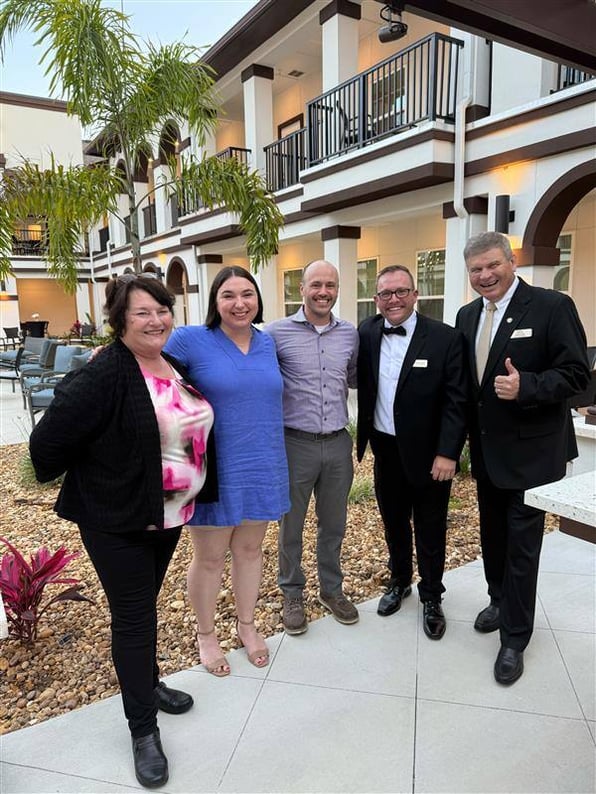6 Ways To Improve Your Senior Dining Experience

Senior living communities have seen a surge of new residents over the past several years. As the U.S. population ages, demand for excellent senior living solutions is expected to grow. New communities are being developed to meet the demand, and many existing organizations are evaluating their services to better address the needs of current and prospective residents.
The Importance of the Dining Experience
One of the major factors for families and potential residents when choosing an assisted or independent living community is the dining service available on-site. Community dining is an opportunity for residents to gather and socialize each day. Residents also expect good-quality, nutritious meals and a variety of food choices. A dining plan with only mediocre meals, repetitive choices, and cumbersome ordering processes can frustrate residents.
Key Ways To Enhance the Senior Dining Experience
Utilizing assisted living technologies and digital solutions for senior living dining services management and point of sale (POS) systems can elevate the dining experience for residents. A resident-centered approach to dining management can simplify ordering, accommodate special requests, and ensure food quality.
Ensure Proper Nutrition
Residents in senior living communities may appreciate having meals prepared for them, but they don't want to sacrifice quality or nutrition for convenience. Dining services that offer limited menus or rely on bland, frozen meals lower the appeal of on-site dining.
Offering scratch-made meals ensures that meals are fresh and delicious and provide balanced nutrition. Menus for scratch-made meals can incorporate seasonal ingredients and local specialties that residents may enjoy.
Services like Passion for Dining and Nutrition offer four-week menu cycles that are chef created and dietitian-approved for senior community residents. Menus like these can be more easily customized to meet dietary needs, including low-sodium foods, diabetes-friendly meals, vegetarian diets, or high-fiber, and high-protein diets.
Menu planning services can work directly with dining management systems to create a dining experience that meets the needs of the community's residents. Integrated menu planning systems also capture ordering history, and kitchens can use that information to assess which meals residents prefer and ensure their nutritional needs are met.
Encourage Socialization
The dining facilities in senior living communities are often the heart of social engagement for residents. Gathering for a meal in a community setting is a time-honored way of connecting with friends and loved ones. In addition to sharing meals with neighbors, residents at senior living communities often want to invite family and friends from outside the community to visit them. Being able to invite guests to eat on-site is valuable for residents who may have mobility limits and prefer not to travel too far to eat with family outside of the community.
Dining services that can easily accommodate guests make family members of residents feel welcome and included in the community. Online reservation systems ensure that dining facilities are prepared to welcome guests when they arrive, and POS systems can manage guest payments without much setup or hassle.
Foster Independence
Letting residents choose between a variety of dining options throughout the community fosters independence. Residents can choose their preferred dining style, menu, and dining times. In addition to traditional dining rooms, residents may enjoy cafe-style dining or a casual pub atmosphere. Other residents may take advantage of always-available complete meals in a grab-and-go package or a la carte items at a convenient shop on-site.
All dining operations can operate on a cashless system with centralized billing, so residents can simply dine where they choose or pick up what they need as they need it, helping them remain independent. Residents or their families can also track their accounts online and make payments or meal plan adjustments.
Improve Communication Between Staff and Residents
Online ordering allows residents to make meal choices on a clear, intuitive platform that automatically links to their specific dietary needs. The system enables clear communication between residents and staff regarding dining and meal preferences.
Online ordering reduces errors and streamlines the dining process. The online ordering system can have individual profiles for community residents, complete with a photo so that servers can be sure they're addressing the right person. Resident profile pages show staff alerts for menu items that contain allergens or other ingredients that residents prefer to limit. An easy-to-read touchscreen interface allows residents to spend less time pouring over a menu in the dining room and more time enjoying meals. In addition, online ordering allows communities to provide in-room delivery of meals and other items, whether ordered days or hours in advance.
Involve Family Members in the Decision-Making Process
Not all residents at senior living communities can make fully independent decisions. In those cases, it's important to offer accessible online tools that family members can use to support their loved ones. Digital dining management systems offer remote access for family members and authorized caregivers. They can access the online ordering platform to help manage dining plans, make payments, and check other account information.
Ensure Food Safety
Special diets and food allergy awareness need to be top priorities for any dining establishment. Senior living communities must be particularly attentive to individual dietary needs since accommodating food allergies, texture requirements, and special diets is an ongoing requirement for residents. Doctors may order diet changes , and making that data easily accessible to kitchen staff will prevent errors. Preventing errors here is critical for any senior living team, software that tracks this data can prevent choking risks, help residents with diabetes management, and address other health concerns.
Up-to-the-minute diet information needs to be available for all kitchen staff and servers. Systems that record all resident dietary needs and collate that data with menu offerings increase food safety and simplify ordering. The menus can highlight items with allergens, alerting both residents and servers to the issue. Servers can easily transmit substitution requests to the kitchen, ensuring meals are safe for diners. When necessary, residents, their caregivers, or their family members can access the account and make changes to their dietary needs. These changes are automatically transmitted to all dining staff.
Embrace a Holistic Approach to Senior Dining
eMenuCHOICE is a leader in providing dining management technology for assisted living communities. Alongside partners like Optima Solutions™, Assisted Dining Solutions™, and FreshMenus™, we offer customizable solutions for communities of all sizes.
If you are interested in learning more about eMenuCHOICE and how we can elevate the dining experience in your senior living community, contact us to schedule a demo. A representative will contact you to learn more about your community and set up a demo that's customized to address your specific needs.



